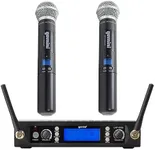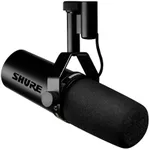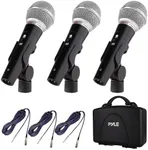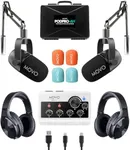Best Recording Microphones
From leading brands and best sellers available on the web.
FIFINE
5%OFF
FIFINE USB/XLR Dynamic Microphone for Podcast Recording, PC Computer Gaming Streaming Mic with RGB Light, Mute Button, Headphones Jack, Desktop Stand, Vocal Mic for Singing YouTube-AmpliGame AM8
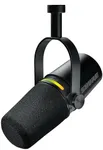
Shure
Shure MV7+ Podcast Dynamic Microphone – OBS Certified, Enhanced Audio, LED Panel, USB-C & XLR Outputs, Auto Level Mode, Digital Pop Filter, Reverb Effects – For Podcasting, Streaming, Recording, Black
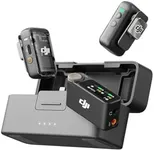
DJI
19%OFF
DJI Mic 2 (2 TX + 1 RX + Charging Case), Wireless Lavalier Microphone, Intelligent Noise Cancelling, 32-bit Float Internal Recording, 820 ft.(250m) Range, Microphone for iPhone, Android, Camera

Logitech for Creators
21%OFF
Logitech Creators Blue Yeti USB Microphone for Gaming, Streaming, Podcast, YouTube, Discord, PC, Studio Sound, Plug & Play-Silver
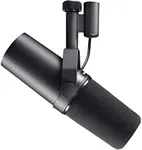
Shure
Shure SM7B Vocal Dynamic Microphone – XLR Studio Mic for Podcasting, Recording, Broadcasting, Streaming & Gaming – Smooth, Warm Sound, Rugged Build, Detachable Windscreen, Wide Frequency Range, Black
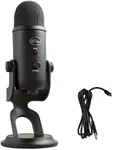
Logitech for Creators
Logitech for Creators Blue Microphones Yeti USB Microphone (Blackout)
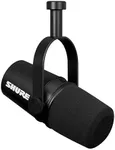
Shure
Shure MV7X XLR Dynamic Microphone – Voice-Isolating Cardioid Mic for Podcasting, Vocal Recording & Broadcasting, All-Metal, Black
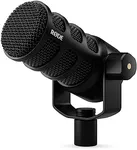
Rode
RØDE PodMic USB Versatile Dynamic Broadcast Microphone With XLR and USB Connectivity for Podcasting, Streaming, Gaming, Music-Making and Content Creation

Shure
Shure MV6 Gaming Microphone – Dynamic USB Mic for PC Gaming & Streaming with Tap-to-Mute, Noise Cancellation, Desktop Stand & 3.5mm Headphone Monitoring, Black
Our technology thoroughly searches through the online shopping world, reviewing hundreds of sites. We then process and analyze this information, updating in real-time to bring you the latest top-rated products. This way, you always get the best and most current options available.

Most Popular Categories Right Now
